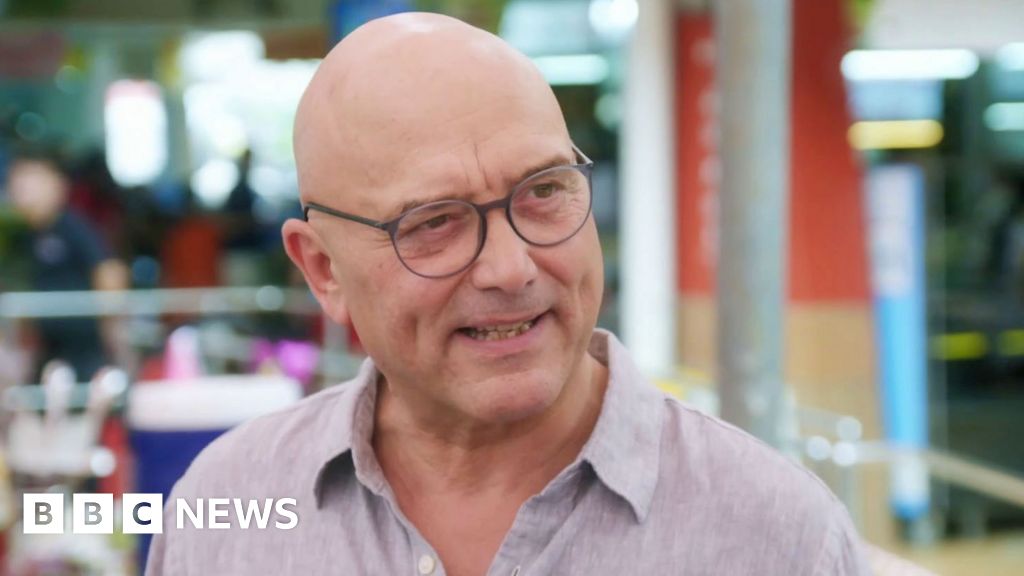ARTICLE AD BOX
Image source, Getty Images
Image caption,Auld Lang Syne plays in the new year in New York City
On New Year's Eve millions of people around the world link hands when they sing Auld Lang Syne.
Now research from the University of Edinburgh has revealed the origins of the Hogmanay tradition are connected to freemasonry.
Singing with arms crossed and hands joined was a parting ritual at many Masonic lodges.
Musicologist Dr Morag Grant discovered the connection in the archives at Glasgow's Mitchell Library.
A newspaper report of an Ayrshire lodge's Burns Supper in 1879 describes Auld Lang Syne being sung as members formed "the circle of unity" - a Masonic ritual also called the "chain of union".
Dr Grant said the tradition of singing the song at times of parting, with crossed hands, emerged in the mid-19th century among Freemasons and other fraternal organisations.
Image source, Mirrorpix
Image caption,Arms linked for Auld Lang Syne at a Birmingham Street Party in 1972
"Auld Lang Syne's sentiments didn't just resonate with Freemasons," she said.
"Some of the earliest reports of the song's use at parting come from American college graduations in the 1850s."
"The many traditions and rituals associated with the song - as well as its simple, singable tune - are key to understanding its phenomenal spread, and why we still sing it today."
What is the origin of the song?
Image source, Getty Images
Image caption,Robert Burns was inspired to write Auld Lang Syne by earlier traditional songs
Robert Burns was a Freemason. The organisation was instrumental in promoting the poet's work during his life and after his death.
He was inspired to write Auld Lang Syne by fragments of earlier folk songs. He wrote the lyrics in 1788 but the tune did not appear together with the song until after his death.
In the final verse the singer offers his hand of friendship to an old friend, and asks for one in return.
Burns wrote: "And there's a hand, my trusty fiere. And gie's a hand o' thine."
Traditionally, at this point the hands are crossed and offered to the those on either side in the circle of singers.
Dr Grant uncovered the masonic link while researching her book Auld Lang Syne: A Song And Its Culture, which explores how its popularity spread around the world.
She studied sources including written accounts, newspaper reports, theatre playbills, printed music and early recordings.
How did its popularity spread?
Image source, Homer Sykes/Alamy
Image caption,Revellers at The Ritz in London link arms to see in the new year in 1986
Dr Grant suggests Auld Lang Syne's global fame predates the invention of sound recording and the broadcast era.
The song had already spread to Japan where it was played at graduations. The tune - known as Hotaru no hikari - is still played at the close of business in some shops.
In 1877, Alexander Graham Bell used it to demonstrate the telephone, and in 1890 it was one of the first songs recorded on Emil Berliner's gramophone.
The song's use at new year emerged around the same time, through Scots gathering outside St Paul's Cathedral in London and others living abroad.
The Scouts also played a key role in its global fame. It was sung at the end of the first World Scout Jamboree in 1920 and versions in French, German, Greek and Polish soon followed.
By 1929, the new year tradition was so well established internationally that a line from the song was displayed on the electronic ticker at celebrations in Times Square, New York.
Dr Grant said: "It's remarkable how this song, written in a language which even most Scots don't fully understand, has become so synonymous with new year the world over.
"Auld Lang Syne is a song about the ties that bind us to others across the years and even though its appeal is now global, it's very much rooted in the world Burns inhabited."

 3 years ago
58
3 years ago
58








 English (US) ·
English (US) ·